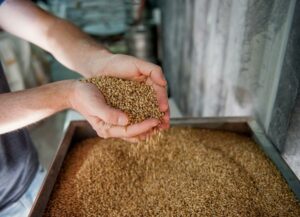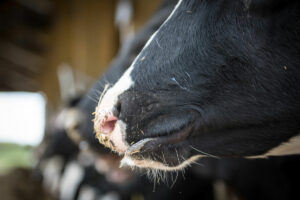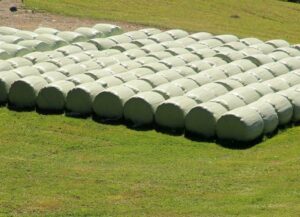Alvaro Garcia
Forages and their fiber have a large effect on milk production, since they constitute the largest nutrient fraction in dairy cow diets. Their chemical composition together with their physical characteristics help maintain a healthy rumen environment critical to animal health and productivity. Corn silage constitutes the main forage used in dairy cow diets in several parts of the world.
Through the years new corn silage varieties have been developed to provide more digestible nutrients and reduce the need for expensive concentrates. Examples are hybrids such as brown midrib corn silage which has a greater fiber digestibility due to its lower lignin content. This enhanced fiber digestibility allows for greater fiber passage rates, emptying the rumen contents faster and allowing for greater intakes. If fiber digestibility is critical to an efficient rumen fermentation so is the supply of key trace minerals required by rumen microorganisms. Their chemical form is also important since it affects their utilization by bacteria and protozoa. Both the hydroxy and sulfate forms of these minerals can have different effects both by affecting rumen fermentation or binding to undigested feed fractions and leaving the rumen unscathed. It has been reported that sulfates of cupper (Cu), manganese (Mn), and zinc (Zn) decreased total-tract fiber (NDF) digestibility when compared to their hydroxy forms. This however can also be affected by the digestibility of forage fiber.
A recent study (Miller et., 2020) evaluated the effects of the type of corn silage and trace minerals on lactation performance and total-tract digestibility of nutrients in Holstein cows. The researchers’ hypothesis was that trace minerals in their sulfate form would have a negative impact on total-tract fiber digestibility, particularly when conventional corn silage was the forage of choice. The lactating Holstein cows used in this experiment were averaging 82 ± 3 days in milk (DIM). The dietary treatments had either conventional (control) or brown midrib-3 corn silage (BM3), and either a sulfate source of Cu, Zn, and Mn or a hydroxy source of the same three minerals. Corn silages were simply substituted on a 1:1 DM basis so that the differences in fiber fractions were those of the source of silage. The targeted supplemental concentrations of copper, zinc, and manganese were 194, 1,657, and 687 mg/d per cow daily, respectively. The average supplemental concentrations of copper, zinc, and manganese for the sulfate trace mineral diets were 10, 41, and 64 mg/kg, respectively; the average supplemental concentrations of Cu, Zn, and Mn for the hydroxy trace mineral diets were 10, 40, and 62 mg/kg, respectively. Total dietary concentrations of Cu, Zn, and Mn for the sulfate trace mineral diets were 17, 104, and 60 mg/kg, respectively, and the average total dietary concentrations of Cu, Zn, and Mn for the hydroxy trace mineral diets were 17, 91, and 66 mg/kg, respectively. The 4 treatments were as follow:
- CON and sulfate trace minerals
- CON and hydroxy trace minerals
- BM3 and sulfate trace minerals
- BM3 and hydroxy trace minerals
As result of its greater NDF digestibility and lower undigestible NDF, cows fed the BM3 diets had greater intake than cows fed the conventional corn silage diets (28.1 vs. 27.5 kg/d). Cows that were fed the hydroxy form of the minerals also ate more than those fed the sulfate form (28.1 vs. 27.5 kg/d). As expected, greater dry matter intake also resulted in more milk production. Milk yield and energy corrected milk were greater for cows fed BM3 diets. This was a combination of the greater feed intake and dietary starch content in those diets. Yield and concentration of milk fat and milk protein content were not affected by corn silage or trace mineral sources. Feed efficiency (milk/dry matter intake) was greater for cows fed the BM3 diets (1.68 vs. 1.63 kg/kg). In summary:
- Cows fed BM3 diets had greater DM intake and milk yield (28.1 vs. 47.0 kg/d) than those fed CON diets (27.5 vs. 44.7 kg/d).
- Cows fed hydroxy trace minerals had greater dry matter intake (28.1 vs. 27.5 kg/d) than cows fed sulfate trace minerals.
- Cows fed BM3 diets had greater total tract digestible DM and organic matter (72.8 and 74.1% of DM) than cows on CON diets (71.1 vs. 72.3% of DM).
- Cows fed CON diets ruminated longer during the day than cows fed the BM3 diets (524 vs. 496 min/d).
- Corn silage with greater NDF digestibility and lower undigested NDF organic matter enhanced DM intake, milk yield, and total tract digestibility of DM and organic matter.
- Hydroxy trace minerals improved dry matter intake and tended to improve total tract digestibility of amylase NDF organic matter. Milk production performance; however, was not affected by trace mineral source.
In summary: cows fed BM3 diets had greater intakes and energy corrected milk than cows fed CON diets. This of course was expected because of the greater NDF digestibility and lower undigested NDF organic matter. What was also confirmed was that the source of trace minerals affected intake. When considering diets for high milk production, forages with higher digestibility supplemented with the hydroxy form of trace minerals improve intake and total-tract digestibility of the fiber organic matter with the end-result of higher milk yields.
Reference
D. Miller, J. S. Lanier, S. K. Kvidera, H. M. Dann, C. S. Ballard, and R. J. Grant. 2020. Evaluation of source of corn silage and trace minerals on lactational performance and total-tract nutrient digestibility in Holstein cows. J. Dairy Sci. 103:3147–3160.
© 2020 Dairy Knowledge Center. All Rights Reserved.











